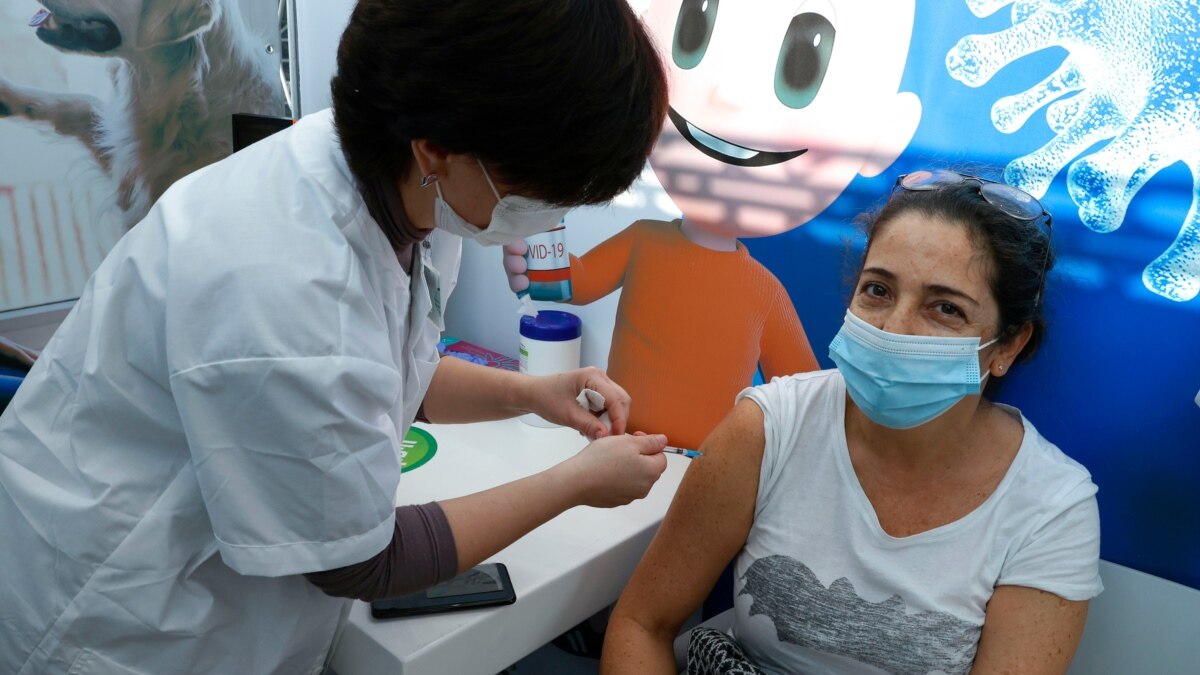From VOA Learning English, this is the Health and Lifestyle report.
As the COVID-19 vaccinations begin, health authorities around the world are looking for any problems that may arise. These side effects – resulting from the administration of the vaccine – are expected and unexpected.
Allergic reactions
Recently, two health professionals in the state of Alaska experienced allergic after receiving the Pfizer COVID-19 vaccine. One of them had a severe reaction and was hospitalized for observation. The reaction of the second worker was less severe.
Britain recently reported two similar cases. The Associated Press (AP) reported that these people have had severe allergies in the past. As a result, British authorities have warned people with a history of severe drug allergies to delay vaccination.
Health officials in the United States are not giving such a strong warning. Health care professionals in the United States always ask people about allergies before vaccination. Instructions for the Pfizer-BioNTech vaccine tell you to avoid it if you are severely allergic to one of your Ingredients or have already had a reaction to it.
The United States Centers for Disease Control and Prevention advise people to remain under observation for about 15 minutes after vaccination. Those with a history of allergy should stay for 30 minutes. If they have a reaction, they can be treated immediately.
However, doctors said the health care professional in Alaska who had the severe allergic reaction had no history of allergies. She felt redness in her face and difficulty breathing 10 minutes after the first injection. She will not receive a second vaccine injection. The second Alaskan worker showed less severe signs. Her eyes became swollen, her throat rough, and she felt shaky or dizzy.
Allergic reactions are common with new drugs. However, observing COVID-19 vaccines for unexpected side effects is more difficult in this case.
This is because of the large number of people who need to be vaccinated over the next year. Another difficulty is the different types of vaccines being used at the same time. It is quite possible that one vaccine has different side effects than another.
The first vaccine that begins to be widely used in the United States and in many Western countries is the one produced by Pfizer and BioNTech in Germany. The second vaccine from Moderna is expected soon.
Both vaccines were made using the same method. The U.S. Food and Drug Administration (FDA) said large studies of each did not reveal major safety risks.
Dr. Jesse Goodman, of Georgetown University, used to be an important FDA vaccine officer. He told the AP that the allergy concern “again underscores the importance of real-time security monitoring. “
Health authorities have several ways to observe how people react to the COVID-19 vaccines. The AP said that in the coming months, as more people get vaccinated, health officials will create more ways to monitor reactions to vaccines.
Flu-like side effects
Getting the Pfizer-BioNTech or Modern vaccine can cause some discomfort. This happens with many vaccines.
In addition to arm pain, people may experience elevated body temperature and other flu-like symptoms symptoms. These include extreme tiredness, body aches, feeling cold and a headache. These symptoms last for about a day. But sometimes they can be serious, causing the person to miss work. Reports suggest that these symptoms are more common after the second injection and more common in younger people.
COVID-19 vaccines appear to cause more of these reactions than a flu vaccine. In some people, the reaction is similar to that of a person receiving a vaccine against the infection called a zone.
Side effect similar to coronavirus
However, some reactions are similar to the first symptoms of coronavirus. This is one of the reasons why hospitals are not administering the vaccine to all their employees at the same time. They are administering vaccines to workers in smaller groups for a longer period.
What about serious risks?
The FDA has found no serious side effects in the tens of thousands of people involved in studies of the two vaccines.
However, rare but serious side effects sometimes occur when a vaccine is used widely. This also happens when the vaccine has not undergone accurate and complete tests.
Dr. Jay Butler of the CDC cautioned that balancing any possible risks “with the benefits the vaccine provided in the pandemic is an ongoing process ”.
And this is the Health and Lifestyle report. I’m Anna Matteo.
Anna Matteo adapted this story from the Associated Press for VOA Learning English. Mario Ritter, Jr. was the editor.
_______________________________________________________________
Words in this story
allergic –Adj., allergy –N. related to a medical condition that makes someone sick after coming into contact with a substance that is harmless to most people
ingredient –N. one of the substances that make up a mixture
swollen –Adj. larger than normal, swollen
rough –Adj. painful, bigger or rougher than normal
monitor –V. to watch, observe, listen or check for a special purpose, such as health, over time
discomfort –N. an uncomfortable or painful feeling in the body
symptom –N. a sign that a disease or problem is present
to benefit –N. good, useful or healthy results



